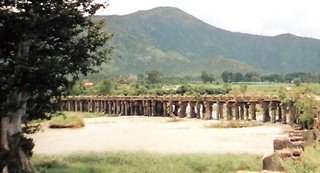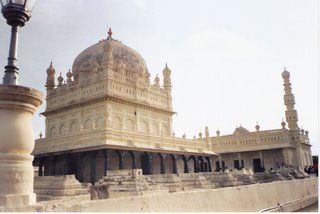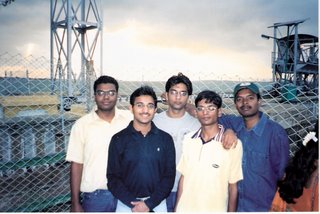
That morning on 1st October 2005, next to the verdant gardens inside Infosys, Mysore City Campus, packed in a 12-seater and a 22-seater buses were 19 boys and 11 girls waiting patiently … for what? What else - but me and my room partner - we both had missed the alarm as usual.
Around 30-40 kms later, we reached ShriVenkatswamy temple - one of the holiest temples of Karnataka, it was built during the Ganga dynasty (9th C) and improved upon by Hoysalas (13th C). It was also revered by Tipu Sultan, and later by the Wadeyar dynasty till this date. The temple is devoted mainly to Lord Shiva but has idols of all other Gods as well. We also had a rare and delicious flat circular idlis - soft, fresh with excellent chatni - and cheap at 2 idlis for Rs 5
 After encountered 36 hair-pin bends on the way, Ooty obliged with a glimpse. Ooty has indeed become like a huge town in itself and spread itself large. Today it is mostly used as a base for visiting neighboring scenic locales.
After encountered 36 hair-pin bends on the way, Ooty obliged with a glimpse. Ooty has indeed become like a huge town in itself and spread itself large. Today it is mostly used as a base for visiting neighboring scenic locales.PYKARA:
 The falls are 1 km from the road and though there are a few tea-shops in the beginning, the actual spot is uninhabited and pristine. Lush forests giving way to a soft-grass covered valley at the centre of which there are a series of gentle falls - stuff dreams are made of.
The falls are 1 km from the road and though there are a few tea-shops in the beginning, the actual spot is uninhabited and pristine. Lush forests giving way to a soft-grass covered valley at the centre of which there are a series of gentle falls - stuff dreams are made of.REGENCY VILLA:
Initially I had misgivings about a place charging us Rs 1000 per double-room, that too, at 3.5 kms from Ooty when hotel-rooms are still vacant in the city at Rs 300. But, this is accounted by history, for this is no ordinary place, but a series of beautiful cottages and the property of the Wadiyar Maharajah, who still frequent his summer palace, next to the cottages along with the members of his royal family.

Ooty was where Billiards had originated!! The oldest Billiards Table in the world with crystal balls is in the Ooty Club. The second oldest table, complete with an old fashionable score-board, is at this very Regency Villa Palace and is 100 years old. Many of the Bollywood’s shootings have taken place right here at the Palace – “Raaz” (where Bipasha Basu encounters the ghost in the bungalow and in the jungle), "Ek aur ek Gyarah" (Sanjay Dutt and Govinda), "Saajan" are a few noteworthy examples.
COONOOR :
Coonoor is another hill-station connected to Ooty by a steam-driven toy-train, a rarity in the world today. The toy-train's tickets are to be bought in the morning as advance reservations are not permitted. Minutes before the 9:00 am departure, the counter re-opens and the tickets are sold-out at once especially if it is a Sunday.
Painted blue and carried forward by a steam-engine, the toy-train passes 3 tunnels and lush valleys on its way to Coonor in some 45 minutes. The right-side provides a more scenic view. This hill-station has nothing grand but a few panormic sun rise/set - spots and a botanical garden.
9th MILE:
This spot is a few kms from Ooty and ideal for long or short trekking - We did a 3 hour short trek up to Tiger Hill and back through a Toda tribal village. These tribals are pastoral and agricultural-based in work and worship Buffalo God. They alone are allowed to live here as all other areas belong to Forest Department. Many a film-shootings have taken place here and one can see why it is called “Scotland of East”.









